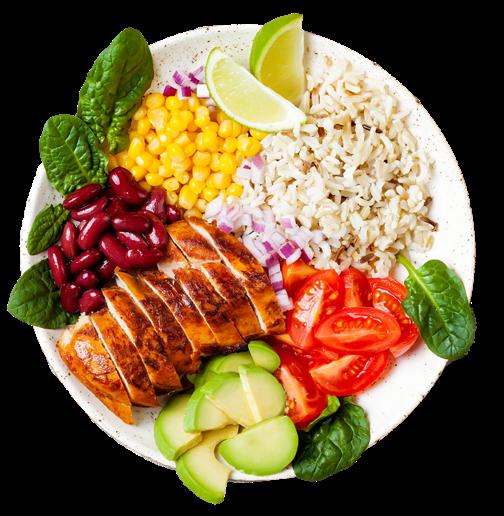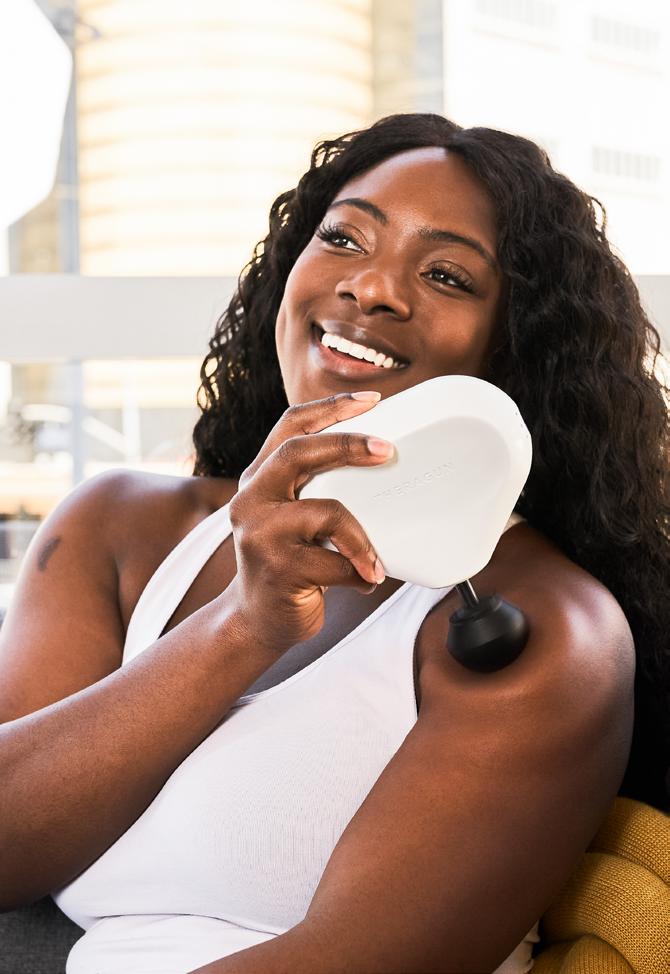
3 minute read
Plating A Performance Summer Salad
BY PAGE LOVE, MS, RD, CSSD, AND EMILY NORRIS, DIETETIC INTERN
Salads are often seen as a boring weight-loss food, but they can be a great option for tennis players looking to fuel their performance. Fresh salads can be optimal for recovery, but in order to replace what was lost during activity, they must contain more than just greens. As a nutrition consultant for both the Women’s WTA Tour and Men’s ATP Tennis Tours, I often see even professional players choose incomplete meal salads not realizing how these choices may negatively impact their performance. The following will help you perform your best, but still obtain optimum, healthy nutrition from your favorite salad meal with a few tweaks!
Complex Carbs – muscle energy choice Complex carbohydrates are the tennis player’s best friend and serve as the primary source of energy because of our higher intensity anaerobic energy needs. Complex carb toppings for salads could include beans, corn, or peas. Another option is to put a starch on the side such as pasta salad, baked or sweet potatoes or a legume/ lentil soup. You can even brighten up your salad with addition quick energy carb toppings such as dried or fresh fruits like oranges, grapes, apples, various berries, dried cranberries, or raisins. Healthy oils – back-up energy sources Tennis players also need healthy oils, especially those from unsaturated sources like olive oil, avocado oil, and pumpkin oils; also consider nuts, seeds, or whole avocado. Oils are an excellent energy source and deliver vitamin E and other building blocks of anti-inflammatory agents in the body called “prostaglandins” that protect cells from damage and aid in quick recovery. If you’re watching the fat intake, opt for a dressing made with vegetable oil and vinegar, like balsamic vinegar or Italian vinaigrette.
Protein – muscle building blocks Protein is an essential building block of muscle and organ mass, and it helps repair and build muscle post-exercise. Some excellent protein sources to top your salad include eggs, chicken breast, beef, fish, and plant-based sources like tofu, garbanzo beans, or edamame. Aim for a palm-sized portion of meat to meet an adult’s minimum protein needs for a pre or post tennis meal. Dairy proteins can make great additions to a salad meal as well, including feta, blue or goat cheese crumbles. They help you to better meet your needs for calcium, too.
Flavor Check – and even more benefit Be a little creative and make salads an opportunity to explore new flavors! Spice things up with an ethnic twist such as an Asian Sesame dressing, and mandarin oranges or Southwest ranch dressing, black beans, corn, and salsa. And consider adding herbs such as cilantro, parsley, dill, and ginger. Fresh herbs add a twist of flavor and additional anti-inflammatory benefits. The options for salads are endless once you have the basics down! Variety of Veggies – antioxidants for recovery Explore adding tomatoes, beets, carrots, cabbage, artichoke hearts, onions, mushrooms, peppers, cucumber, broccoli, and other colorful foods to your salads. The rich color spectrum choices, especially the deep reds and purples, have been proven to lower inflammation and speed muscle recovery time.
Extra, Extra – performance balance If you find your entrée salad a bit light or missing some of the important categories mentioned above, don’t be afraid to order off the menu. Pairing a salad with a complex carbohydrate-based side choices guarantees you will be satisfied and meeting your nutrient goals. Some appropriate choices include whole-grain dinner rolls, crackers, black bean or lentil soup, or a baked potato.















